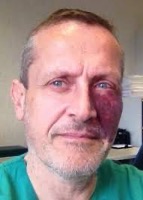Workstream 1 (WS1) focuses on rare congenital uro-recto-genital anomalies. The Expertise Areas (EAs) covered by Workstream 1 are: These EAs require specific diagnoses and surgical correction, often in both acute and staged approaches in neonatal or childhood stages. Expertise is crucial to prevent costly and harmful secondary surgeries. Multi-disciplinary teams (MDTs) offer life-long care, enhancing post-operative well-being. ERN eUROGEN bridges paediatric and adult care gaps, enhancing outcomes through crossover and workstream transfer from WS1 to WS2. Improved transition ensures lifelong positive outcomes and disease self-management, ensuring continuous care across life stages. Dr Giovanni Mosiello is head of the paediatric Neuro-Urology and Surgery for Continence Division of the Bambino Gesù Children’s Hospital in Rome, Italy, which involves several academic activities with different universities in Rome (Sapienza, Campus BioMedico, Tor Vergata, UniCamillus) and the University of Genova. He is the Director of a training-host centre for Pediatric Urology recognised by the European Society of Pediatric Urology (ESPU), the European Association of Urology (EAU), and the Societe International d’Urologie (SIU). He has been a surgical tutor for paediatric urology in many countries worldwide. His clinical activity and research are focused on surgical reconstruction of the lower urinary tract in spina bifida, anorectal malformation, urogenital sinus, bladder exstrophy, posterior urethral valves, and for treatment of obstructive and refluxing megaureter, stones and hypospadias. For his PhD thesis, he developed a urodynamic assessment method for selecting children with congenital neurogenic bladder to individualized treatment modalities. As a medical consultant for Contura A/S, in cooperation with the engineer of the firm, he developed a syringe and needle for endoscopic subureteric injection treatment of vesicoureteric reflux. Based on his group’s research on germ cell development in cryptorchid testes, the consensus regarding surgical treatment within the first year of life was adapted in the National and Nordic Guidelines in 2007 and the US and European guidelines in 2014.
Workstream 1: Rare congenital uro-recto-genital anomalies
Leads
Workstream Lead: Giovanni Mosiello
 Dr Giovanni Mosiello is the Workstream Lead for ERN eUROGEN’s Workstream 1 (rare congenital uro-recto-genital anomalies) and the Expertise Area Coordinator for EA 1.4, non-syndromic uro-recto-genital malformation. He is also the Chair of the cross-ERN (ERN EUROGEN, ERN ITHACA, and ERN ERKNet) Working Group on spina bifida and other dysraphisms (SBoD).
Dr Giovanni Mosiello is the Workstream Lead for ERN eUROGEN’s Workstream 1 (rare congenital uro-recto-genital anomalies) and the Expertise Area Coordinator for EA 1.4, non-syndromic uro-recto-genital malformation. He is also the Chair of the cross-ERN (ERN EUROGEN, ERN ITHACA, and ERN ERKNet) Working Group on spina bifida and other dysraphisms (SBoD).Clinical Lead: Andrzej Gołębiewski
Education Lead: Jorgen Thorup
 Prof. Jorgen Thorup is Head of the Department of Paediatric Surgery at Rigshospital, University Hospital of Copenhagen and Professor and Chair of Pediatric Surgery at the Faculty of Health and Medical Sciences, University of Copenhagen, where he is a clinical lecturer for postgraduate courses in paediatric surgical subjects and has been a supervisor of 22 students and 5 postgraduate theses. He is a Fellow of the European Board of Pediatric Surgery (FEBPS) and a Fellow of the European Academy of Pediatric Urology (FEAPU).
Prof. Jorgen Thorup is Head of the Department of Paediatric Surgery at Rigshospital, University Hospital of Copenhagen and Professor and Chair of Pediatric Surgery at the Faculty of Health and Medical Sciences, University of Copenhagen, where he is a clinical lecturer for postgraduate courses in paediatric surgical subjects and has been a supervisor of 22 students and 5 postgraduate theses. He is a Fellow of the European Board of Pediatric Surgery (FEBPS) and a Fellow of the European Academy of Pediatric Urology (FEAPU).Research Lead: Magdalena Fossum
General Resources

